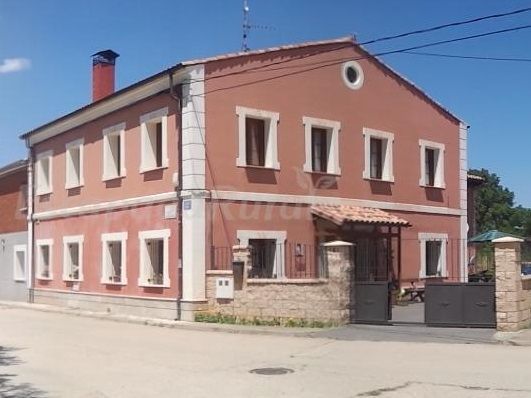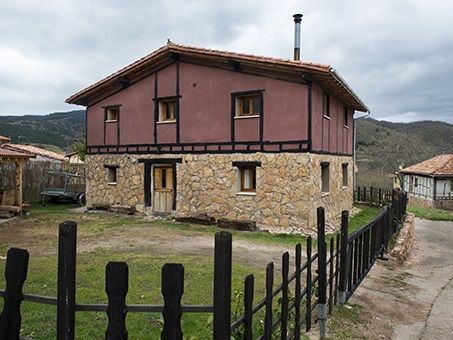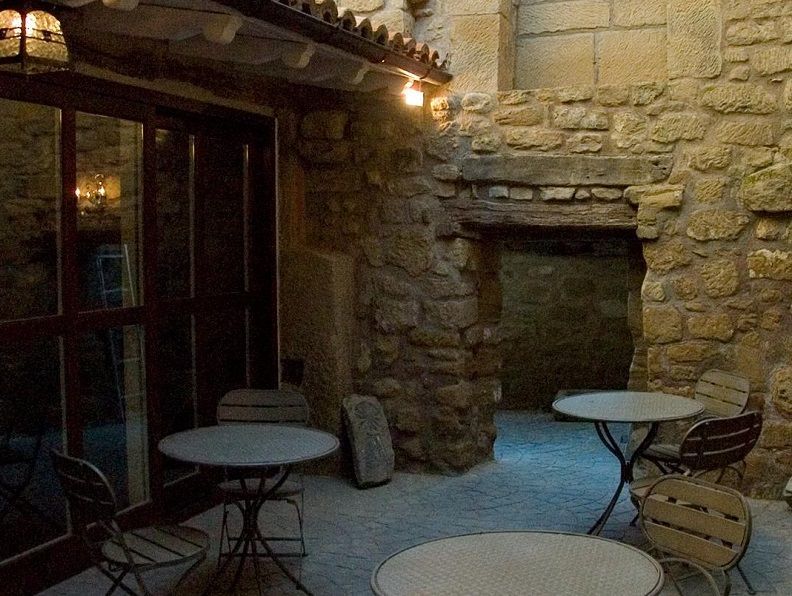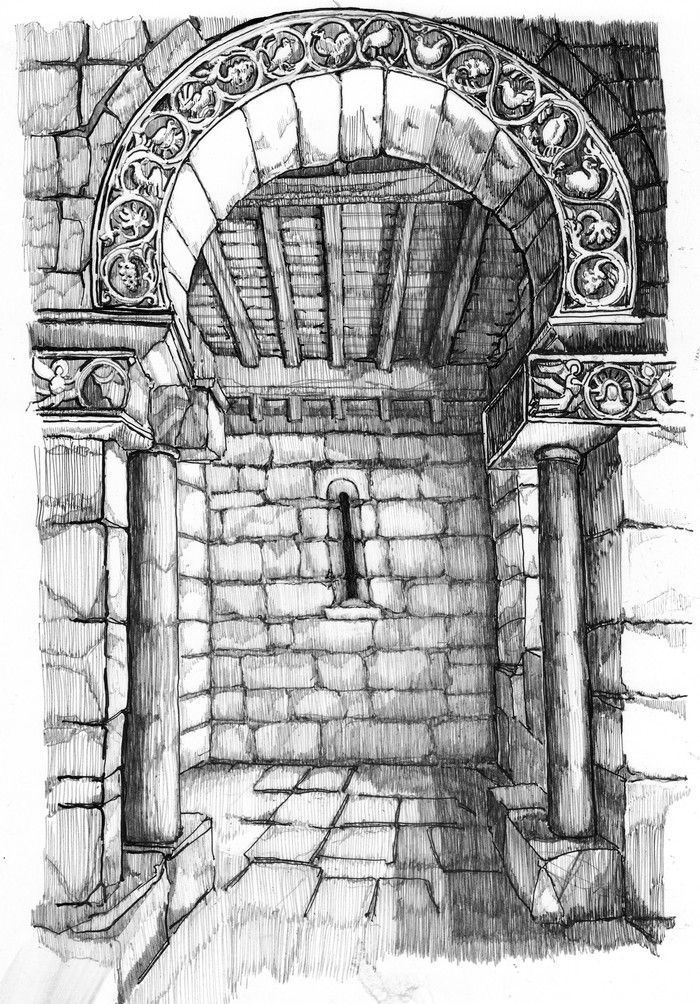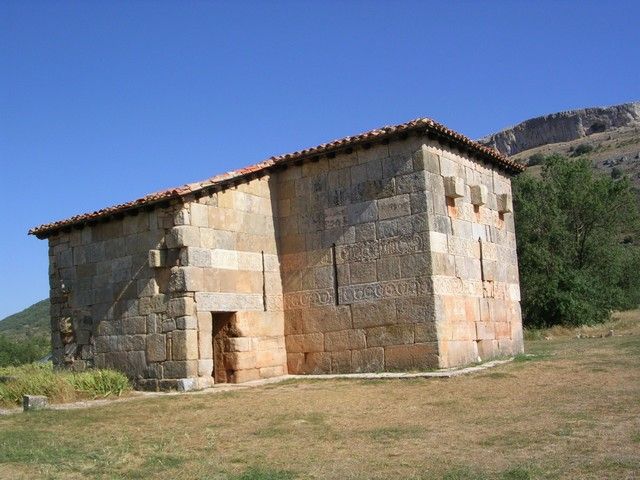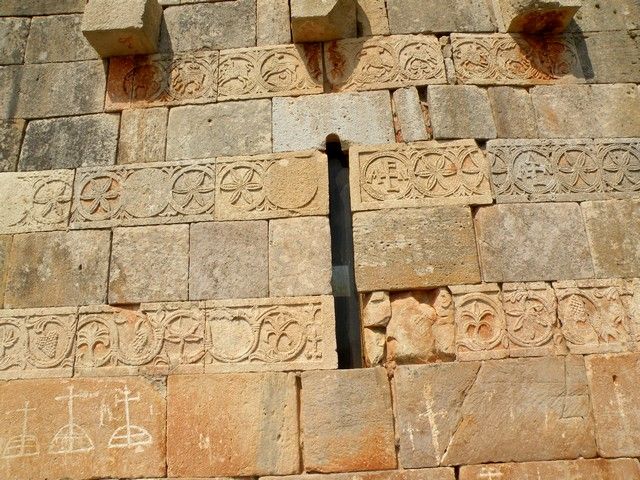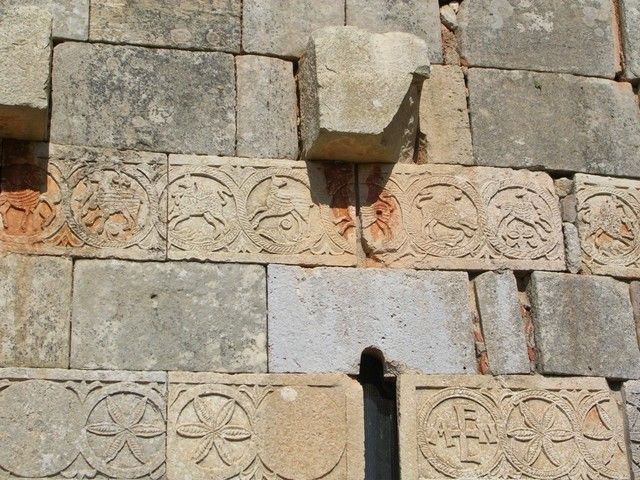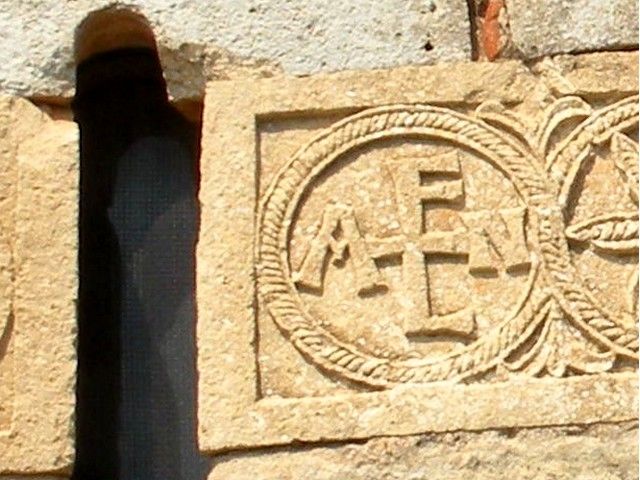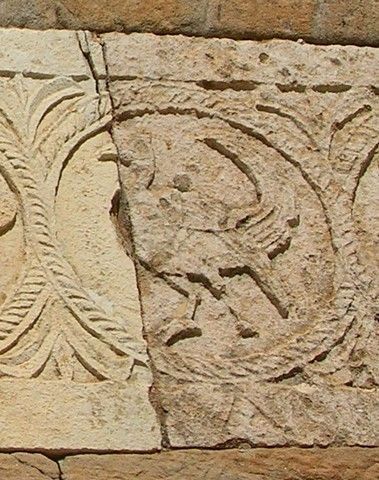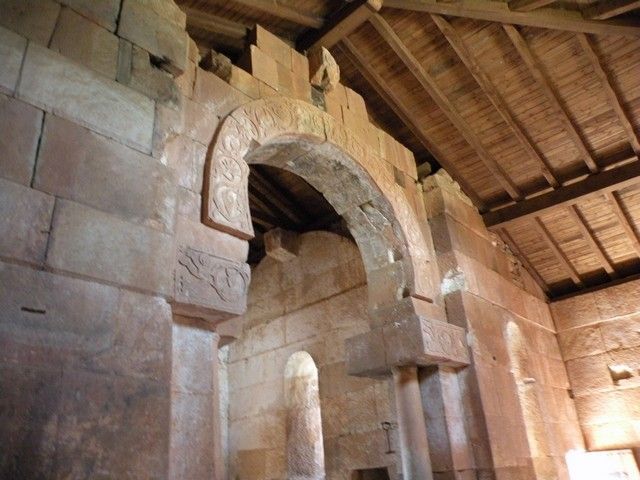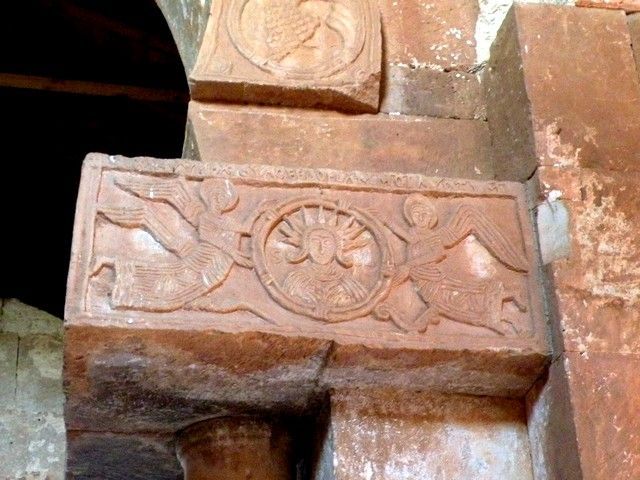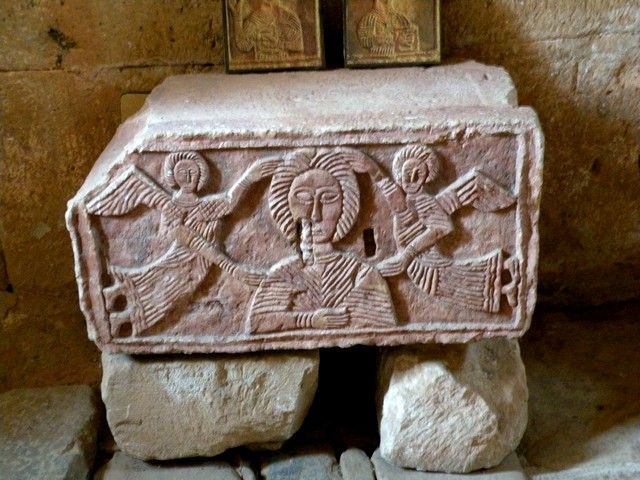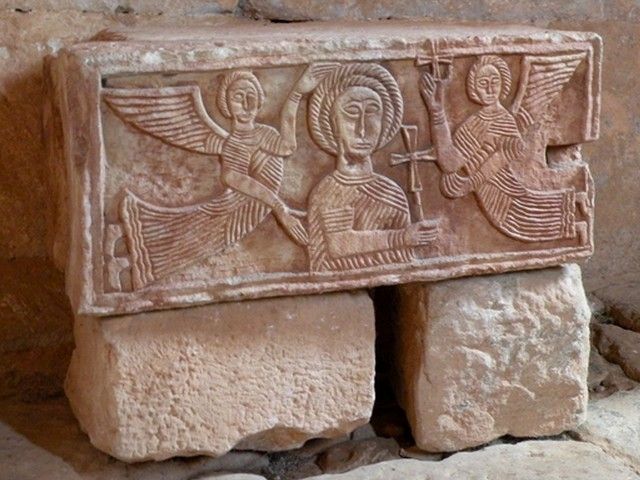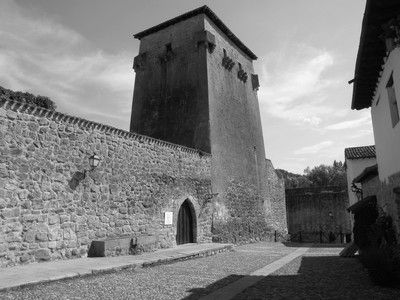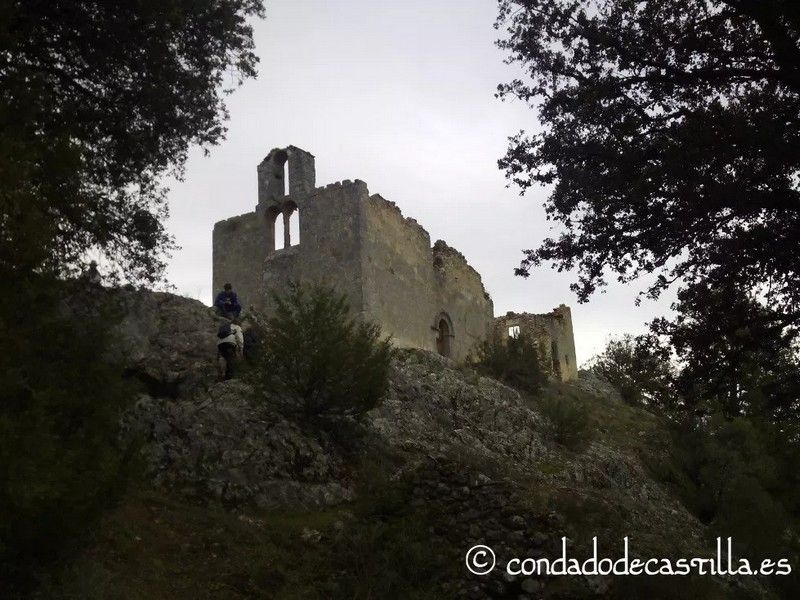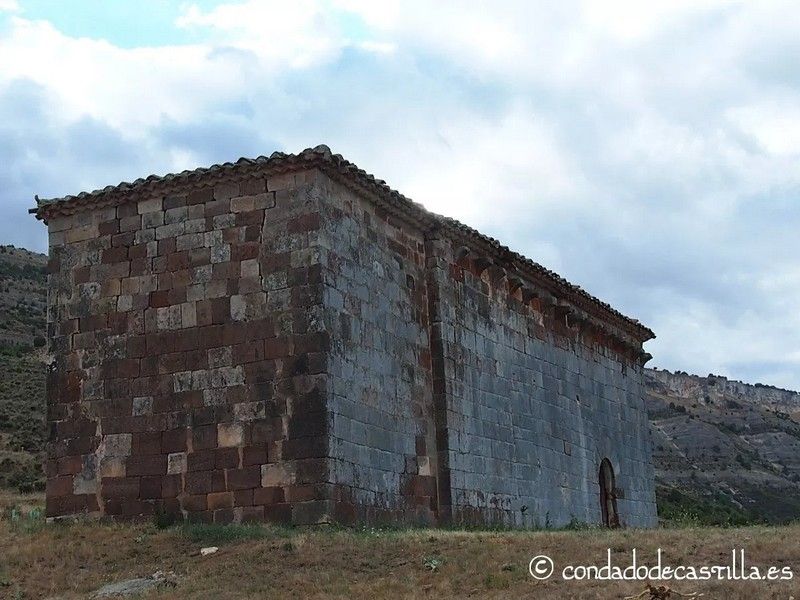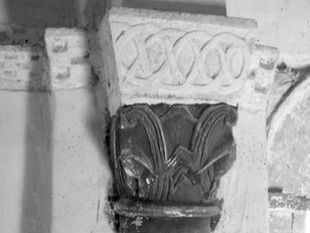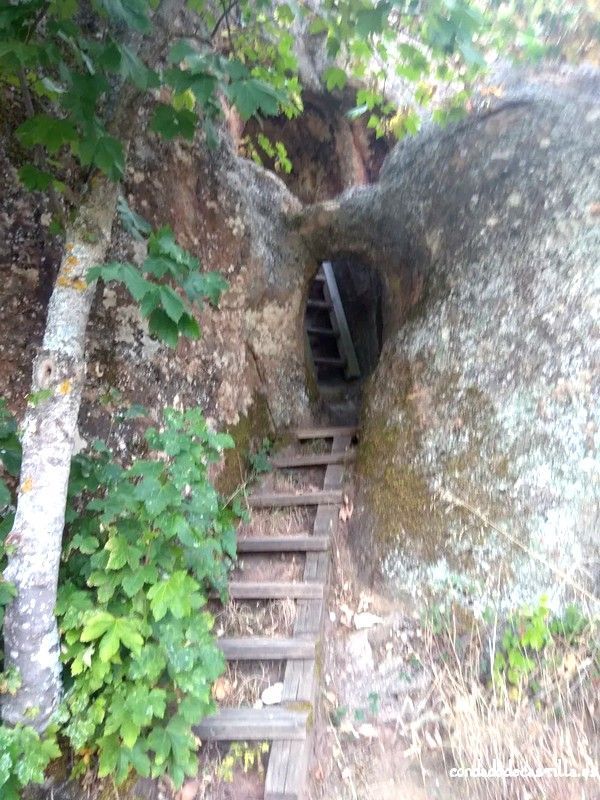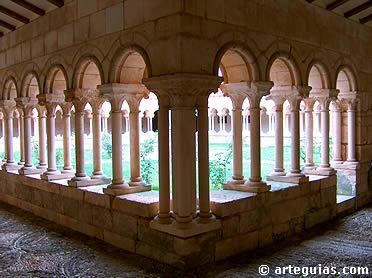QUINTANILLA DE LAS VIÑAS
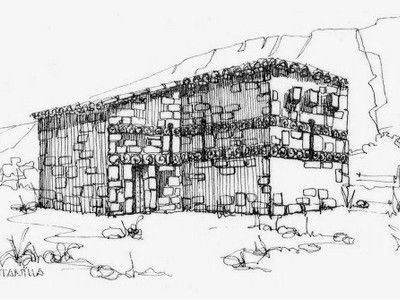
Previous notes
- Fue declarada Monumento Nacional en 1929.
- Según un documento del Cartulario de San Pedro de Arlanza datado en el año 879 sabemos que Gundisalvo Telliz, conde de Lara, encargó la restauración de esta iglesia, que nos ha llegado destruida parcialmente.
- A principios del siglo XX se sustituyeron los restos de la bóveda baída que aún quedaban en el ábside por una techumbre de madera que cubre todo el conjunto.
Historic environment
The church is located in the region of Lara, surrounded by Celtic, Roman and Medieval remains. Only its chevet and a part of the crosssing persist, without the original vaults. Although there have been many doubts about the date it was built, thanks to a dedication difficult to interpret, today its is considered as Visigothic of the 7th century, possibly the last one we have news from, together with Santa María de Melque and San Giao de Nazaré, prior to the Arabic invasion.
Description
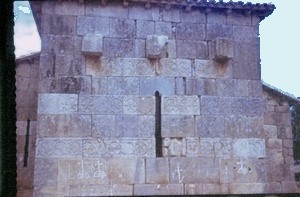 Built on base of large grey limestone ashlars with stripes of engraved decoration in stone, also calcareous but lighter in colour, this church has only reached partially to these days, as the only elements left are the square apse and the transverse nave. For what it has been possible to discover from the excavations, we know it was a three nave basilic, the two lateral ones divided in three chambers and separated by series of horseshoe arches. Only the starting point of one of them has been preserved, with just one exterior square apse and a portico with two lateral chambers at their feet. It has a crossing nave, that would have been of equal height than the central one, with lateral overhanging porticos, as well as the apse, from the basilica’s rectangular plan. Its structure seems a step in between San Pedro de la Nave and the Asturian churches of later.
Built on base of large grey limestone ashlars with stripes of engraved decoration in stone, also calcareous but lighter in colour, this church has only reached partially to these days, as the only elements left are the square apse and the transverse nave. For what it has been possible to discover from the excavations, we know it was a three nave basilic, the two lateral ones divided in three chambers and separated by series of horseshoe arches. Only the starting point of one of them has been preserved, with just one exterior square apse and a portico with two lateral chambers at their feet. It has a crossing nave, that would have been of equal height than the central one, with lateral overhanging porticos, as well as the apse, from the basilica’s rectangular plan. Its structure seems a step in between San Pedro de la Nave and the Asturian churches of later. impression that they were never placed where they were intended to. On the other hand, out of the six medallions on the exterior walls of the rectangular apse, placed to receive monograms carved in stone with intertwined letters in the Gothic style, only three have been sculpted, the other remained without any decoration. This shows the possibility that part of the decoration of the Visigothic buildings might have been sculpted on walls that had already been raised, that could explain some conflictive issues like the shortage in decoration of Santa María de Melque, that could have occurred because the Arab invasion did not leave time to decorate it.
impression that they were never placed where they were intended to. On the other hand, out of the six medallions on the exterior walls of the rectangular apse, placed to receive monograms carved in stone with intertwined letters in the Gothic style, only three have been sculpted, the other remained without any decoration. This shows the possibility that part of the decoration of the Visigothic buildings might have been sculpted on walls that had already been raised, that could explain some conflictive issues like the shortage in decoration of Santa María de Melque, that could have occurred because the Arab invasion did not leave time to decorate it.new connection points between the Visigothic architecture of the end of the 7th century and the first Asturian churches like Santianes de Pravia and San Julián de los Prados:
- The presence of a transverse nave, of equal width than the central nave, in combination with a basilical plan.
- The lateral naves are much narrower than in the preceeding monuments, as in the Asturian churches.
- From the reamains preserved, we know that the central and the crossing nave raised to a considerable height and were possibly covered with a wooden roof.
- The existence of a portico with lateral chambers lets us think that a gallery could have been on top, that already appears in San Giao de Nazaré and that it would become usual in all Asturian architecture.
At the entrance of the apse a wonderful toral arch has been preserved; undoubly Visigothic, with a horseshoe shape  that extends itself ¼ of its radius with a lower and divergent extrados and perfectly centred voussoirs with central key and imposts upon columns. It is the most perfect and interesting horseshoe arch that has been found until our days in all Visigothic architecture (see diagram in the page of General Characteristics of Visigothic Art).
that extends itself ¼ of its radius with a lower and divergent extrados and perfectly centred voussoirs with central key and imposts upon columns. It is the most perfect and interesting horseshoe arch that has been found until our days in all Visigothic architecture (see diagram in the page of General Characteristics of Visigothic Art).
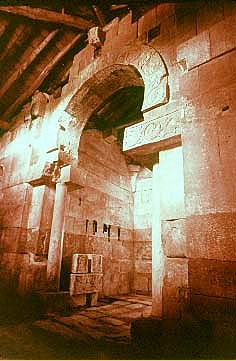 vegetal drawings. The third stripe of the headwall is similar but with representation of animals of a clear Syrian-Persian influence. In the second one there are also some anagrams similar to those of Visigothic coins of the second half of the 7th century.
vegetal drawings. The third stripe of the headwall is similar but with representation of animals of a clear Syrian-Persian influence. In the second one there are also some anagrams similar to those of Visigothic coins of the second half of the 7th century.
- The bas relief of the right impost where the arch of the entrance to the apse rests, represents two angels face to face in their flight, both holding a circular medallion with the image of a radiant sun, represented as a callow male figure. Their silhouettes, with gash strokes come out with little relief upon a flat background; above the figure, the Visigothic handwriting SOL.
- The other block, located in the left impost, has the same composition but ir represents the moon, in a very unusual way,
 as a male character with a beard, as well as with the two angels supporting the circle where, on the head of the figure there is a waxing moon with its word: LUNA (MOON).
as a male character with a beard, as well as with the two angels supporting the circle where, on the head of the figure there is a waxing moon with its word: LUNA (MOON). - Two other blocks of the same shape and size as the former ones are now on the flor of the high altar. One represents a male figure looking to the front holding a processional cross in its right hand and two angels, like the former ones , blocks of the Sun and the Moon. The other one follows the same
disposition, only that in this case the figure is a feminine one representing a woman with her hand on her chest. It is possible that they had been placed in the separation arch between the crossing and the central nave that would have been similar to the one preserved in the chevet.
- The last block, located above the triumphal arch’s key, represents a bearded Christ with a cruciferous halo in a blessing attitude
 . It is speculated that the two blocks representing the evangelists might have been located at both sides of this last block.
. It is speculated that the two blocks representing the evangelists might have been located at both sides of this last block.
Conclusions

In summary, Santa María de Las Viñas is a basic link for the knowledge of all the Spanish medieval art, both, for its structure that constitutes an intermediate step between the Visigothic cruciform churches and the Asturian ones with three naves with a crossing, including also the possibility -as with the Asturian churches later- that a gallery could have existed above the portico, as we have already seen in San Giao de Nazaré, as well as for its iconography, which influence is not only clearly reflected in the Mozarabic painting and miniatures, but also in all the European Romanesque making of religious images.
PLUNDER: A short time ago, two of the decorated blocks that were on the floor of the church, weighing 130 kg each, have been stolen from the interior of the church. Due to this, the rest of the loose pieces have been transferred to the Archaeological Museum of Burgos, leaving exact copies of the originals in the church. Years later they appeared in a garden in England and now they are also in the Burgos Museum. (See photo of stolen blocks).
Other interesting information
Access: Leave Burgos to the south taking A-1; at 10.5Km take N-234 towards Soria for 40 Km. Turn to the left taking BU-V-8207 towards Quintanilla that you will reach in 4.7Km.
GPS Coordinates: 42º 7′ 28,20″N 3º 28′ 22,67″W.
Visiting hours: Free visit to the interior of the chapel. Gatekeeper (Antonio): 626 496 215.
October-April: 10:00-17:00. May-September: 10:00-14:00 and 16:00-20:00. Closed Mondays, Tuesdays and last month’s weekend.
Telephone Ayuntamiento de Mambrillas de Lara. 947 39 20 49.
Bibliography
Historia de España de Menéndez Pidal: Tomo III SUMMA ARTIS: Tomo VIII
L’Art Preroman Hispanique: ZODIAQUE
Ars Hispanie: Tomo II
Imagen del Arte Hispanovisigodo: Pedro de Palol
Portals
Quintanilla de las Viñas y el arte cordobés
Iglesia de Santa María de Quintanilla de las Viñas (Burgos)
Santa María de Quintanilla de las Viñas
Los anagramas y el programa iconográfico de Quintanilla de las Viñas





